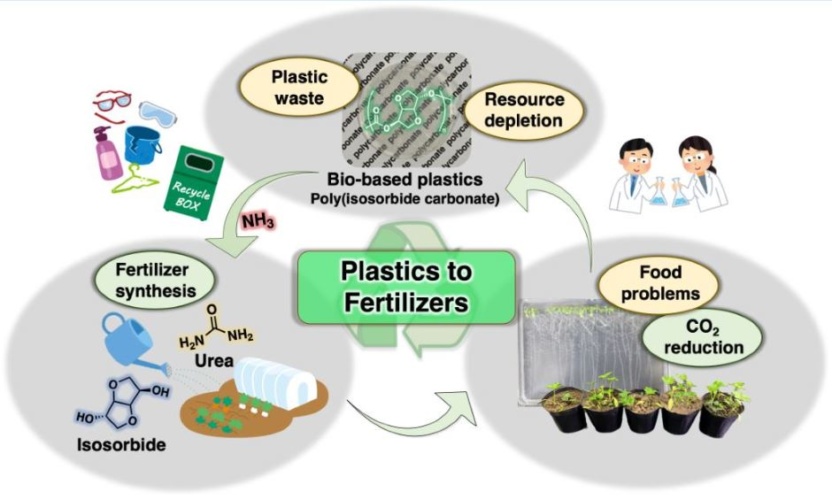
The advance from the Tokyo Institute of Technology (Tokyo Tech) was led by assistant professor Daisuke Aoki and professor Hideyuki Otsuka and is claimed to pave the way towards sustainable circular systems that address plastic pollution, petrochemical resource depletion, and world hunger. The team’s findings have been published in Green Chemistry.
For their study, the team focused on PIC (poly (isosorbide carbonate)), a type of bio-based polycarbonate produced using a non-toxic material derived from glucose called isosorbide (ISB) as a monomer. The carbonate links that join the ISB units can be severed using ammonia (NH3) in a process called ‘ammonolysis’. The process produces urea, a nitrogen-rich molecule that is widely used as a fertilizer. According to Tokyo Tech, few studies on polymer degradation have focused on the potential uses of all the degradation products instead of only the monomers.
MORE FROM ENERGY & ENVIRONMENT
The scientists first investigated how well the complete ammonolysis of PIC could be conducted in water at 30°C and atmospheric pressure. The team analysed the reaction products through nuclear magnetic resonance spectroscopy, Fourier transform infrared spectroscopy, and gel permeation chromatography.
Although they managed to produce urea in this way, the degradation of PIC was not complete after 24 hours, with many ISB derivatives still present. The researchers increased the temperature and found that complete degradation could be achieved in about six hours at 90°C.
“The reaction occurs without any catalyst, demonstrating that the ammonolysis of PIC can be easily performed using aqueous ammonia and heating,” Dr Aoki said in a statement. “Thus, this procedure is operationally simple and environmentally friendly from the viewpoint of chemical recycling.”
As a proof-of-concept that all PIC degradation products can be directly used as a fertilizer, the team conducted plant growth experiments with Arabidopsis thaliana, a model organism. They found that plants treated with all PIC degradation products grew better than plants treated with just urea.
“We are convinced that our work represents a milestone toward developing sustainable and recyclable polymer materials in the near future,” said Dr Aoki. “The era of ‘bread from plastics‘ is just around the corner.”




Project to investigate hybrid approach to titanium manufacturing
What is this a hybrid of? Superplastic forming tends to be performed slowly as otherwise the behaviour is the hot creep that typifies hot...